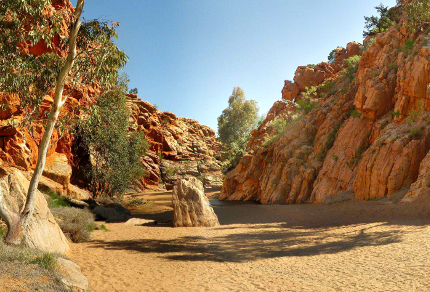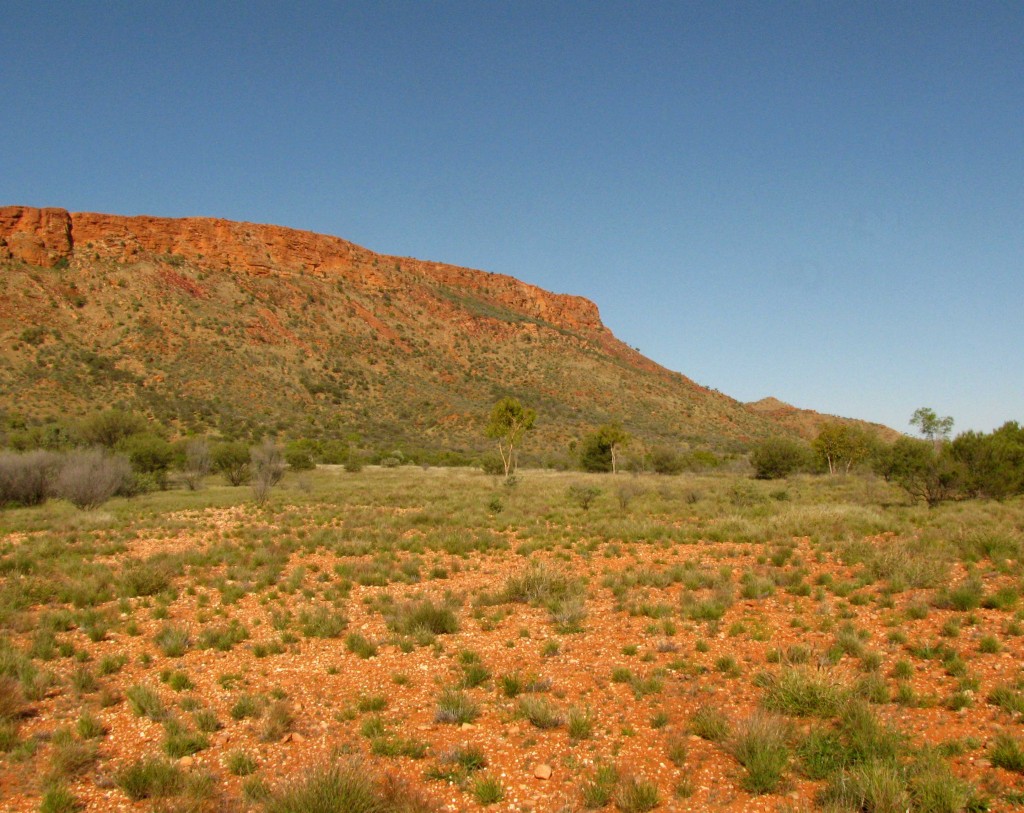
Alice Springs Desert Park (© Vilis Nams)
Stepping outdoors in Alice Springs this morning was like arriving in Australia all over again – different climate, different topogropahy, different flora and fauna. Unknown bird songs filled the air, and I scrambled to identify new species all around me in the Alice Springs Desert Park west of the city, where Vilis and I spent the entire morning and early afternoon. Flocks of budgies raced from tree to tree like exquisite emerald and lemon sprites. White-plumed honeyeaters having diagonal slashes of white feathers on their necks were everywhere. Black and shocking-blue male splendid fairy-wrens flitted between densely-leaved shrubs. Rufous songlark males with rusty tails flew fluttering courtship flights over the stony desert, their voices high and sweetly broken into trills and ringing notes.
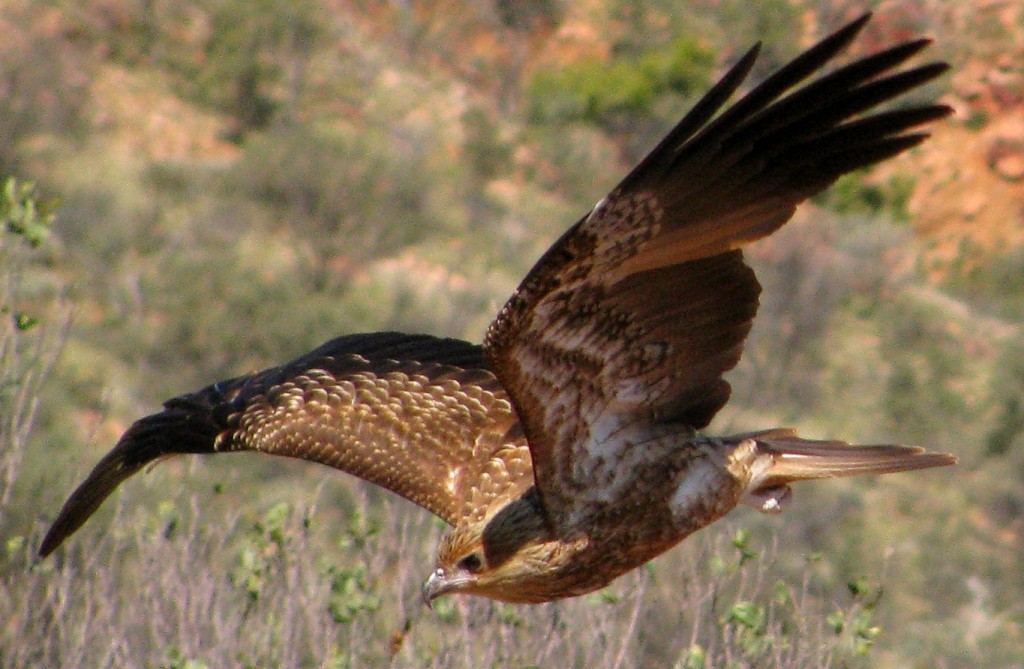
Whistling Kite at Alice Springs Desert Park (© Vilis Nams)
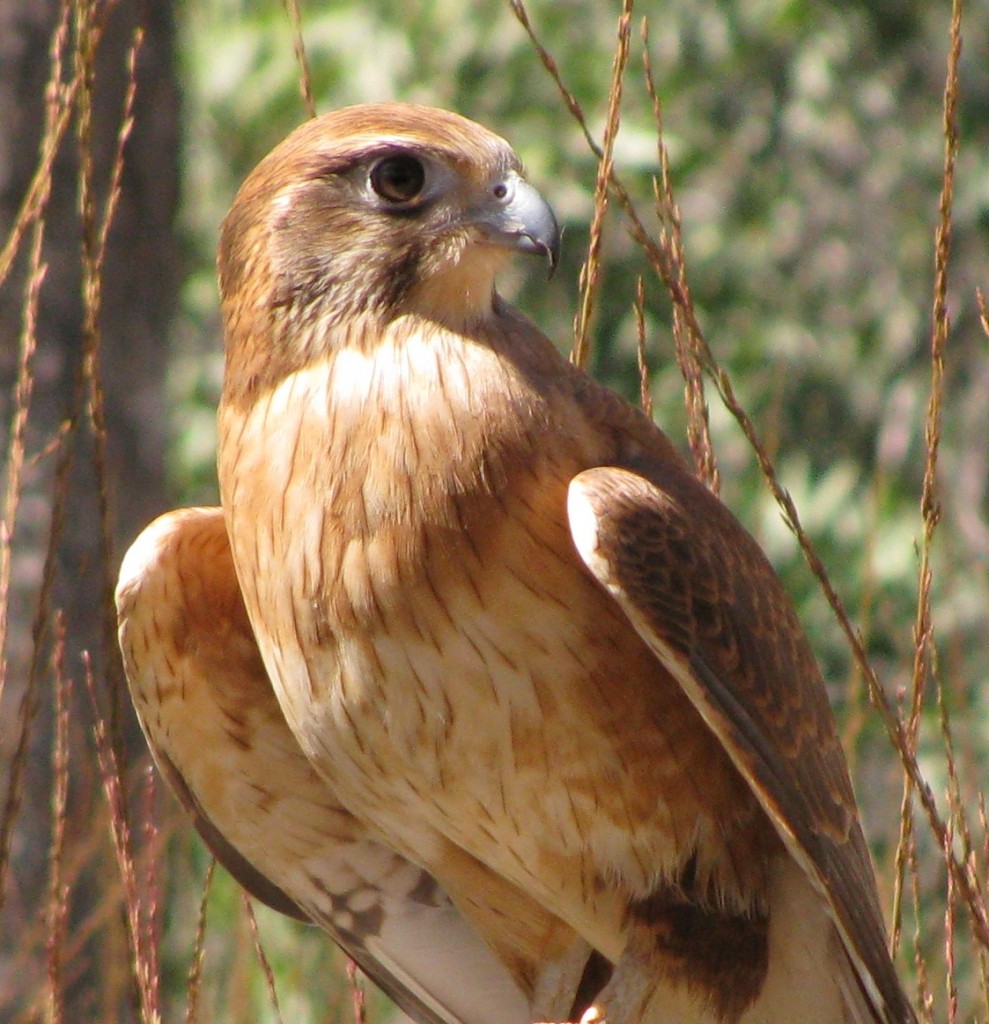
Brown Falcon, Alice Springs Desert Park (© Vilis Nams)
In mid-morning, Vilis and I joined other spectators in the Nature Theatre to observe free-flying raptors trained as showbirds as they flew in for food. A barn owl, brown falcon, whistling kite, and two black kites – one a show bird and one a wild unknown wanting a piece of the action – swooped in to land on a dead tree near the theatre, made passes over our heads, or nimbly caught their meat treats in the air. The two black kites vied for the food, the show bird once attacking the wild kite with its talons.
Following the raptor show, we wandered through desert rivers, sand country, and woodland habitats, and checked out the nocturnal house with its endangered marsupial mammals. I chalked up more new species, including singing and spiny-cheeked honeyeaters, little crows, and long-nosed dragons that basked on stones, darted across trails, and climbed into trees.
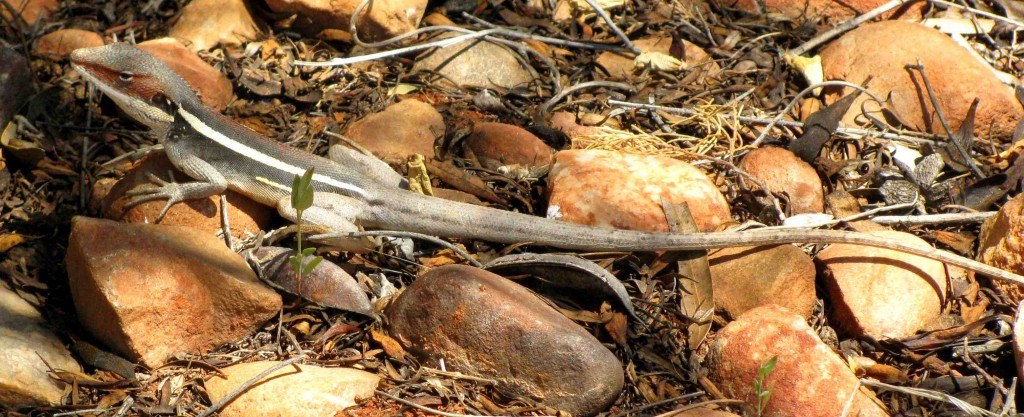
Long-nosed Dragon, Alice Springs Desert Park (© Vilis Nams)
With the heat of the desert afternoon pouring down onto us, Vilis and I left the park, stocked up on food supplies in Alice Springs – a government and outback industry supply centre that reminded us remarkably of Whitehorse, the capital of Canada’s Yukon Territory. Both cities are surrounded by vast tracts of wilderness, both have an obvious indigenous population, and both cater to tourists as well as government employees and local industries. After indulging in generous slabs of carrot cake as a reward for our morning efforts, we drove south through Heavitree Gap in the MacDonnell Ranges to the junction with Ross Highway and followed the highway east, paralleling the East MacDonnell Range or ‘East Macs’ and visiting Emily and Jessie Gaps – conspicuous water-eroded chasms in the mountain range.
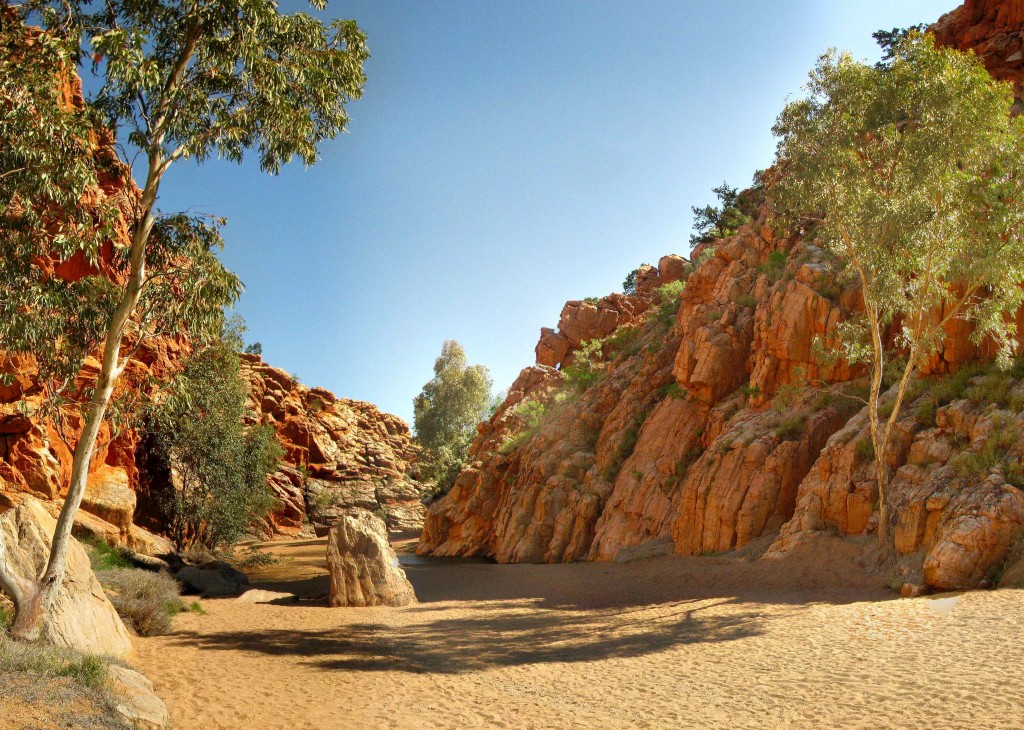
Emily Gap, Emily and Jessie Gap Nature Park, Northern Territory (© Vilis Nams)
At Emily Gap, budgies and white-plumed honeyeaters abounded in the trees bordering waterholes in the gap, and ancient Aboriginal art adorned red rock walls. The art, painted with red ochre and powdered limestone, portrayed three caterpillars representing beings of great cultural significance to the Arrernte people, who believe a legendary hero killed and ate caterpillars at that site during his Dreamtime journey.1
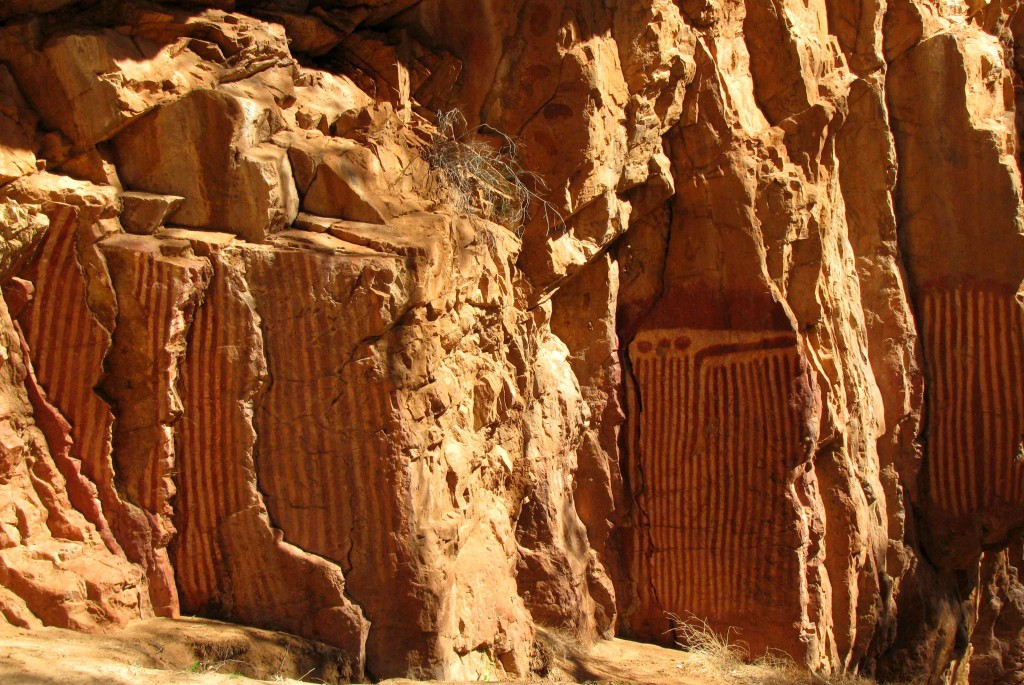
The Three Caterpillars, Emily Gap (© Magi Nams)
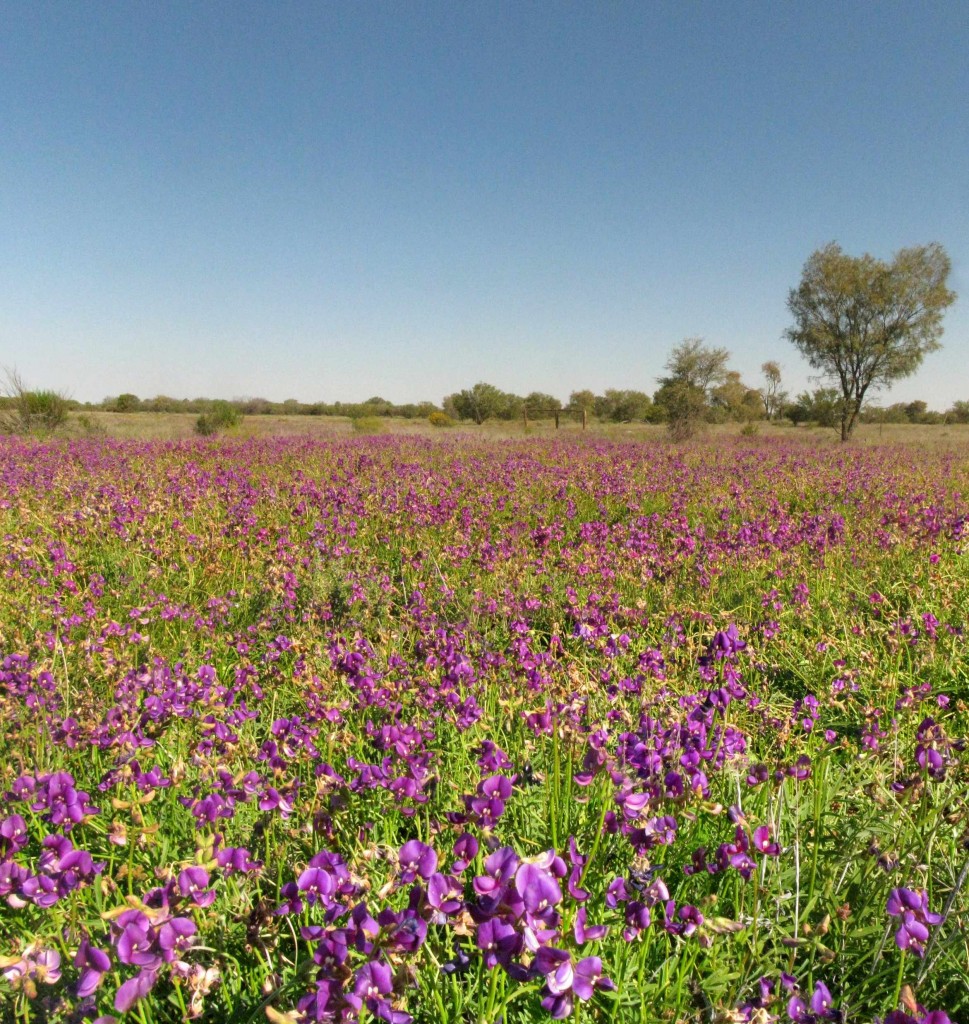
Desert Wildflowers near Emily Gap (© Vilis Nams)
East of Emily Gap, we strolled in a roadside wildflower meadow so lush with purple colour it seemed at total odds with the notion of this land being a desert landscape. Such was the gift of the rains that have poured twice as much rain as usual onto Alice Springs this year. Vilis nearly fell asleep in the flowers, but we eventually dragged ourselves away and continued east, our destination Trephina Gorge 85 kilometres east of The Alice. The two-lane bitumen narrowed into a single lane of pavement bordered by gravel and leading toward rollercoaster hills comprised of wavy rock strata.
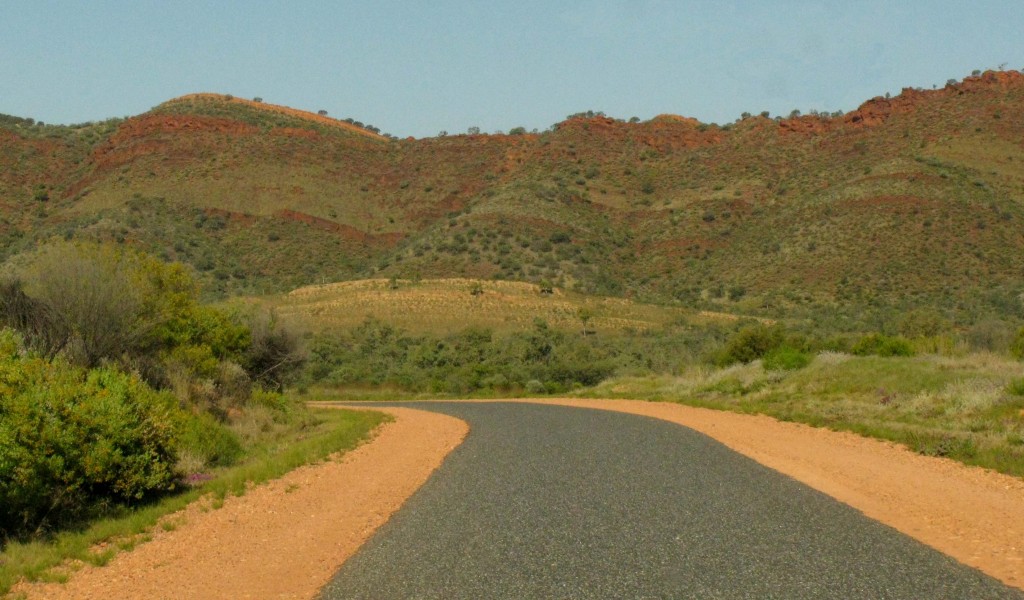
Ross Highway near Trephina Gorge (© Magi Nams)
- On a cattle station bordering the highway, we observed our first feral camel, and as we neared the gorge, magnificent bastions of red rock loomed above us, thrilling us with the prospect of bushwalking that red rock country tomorrow.
-

Feral Camel (© Vilis Nams)
-
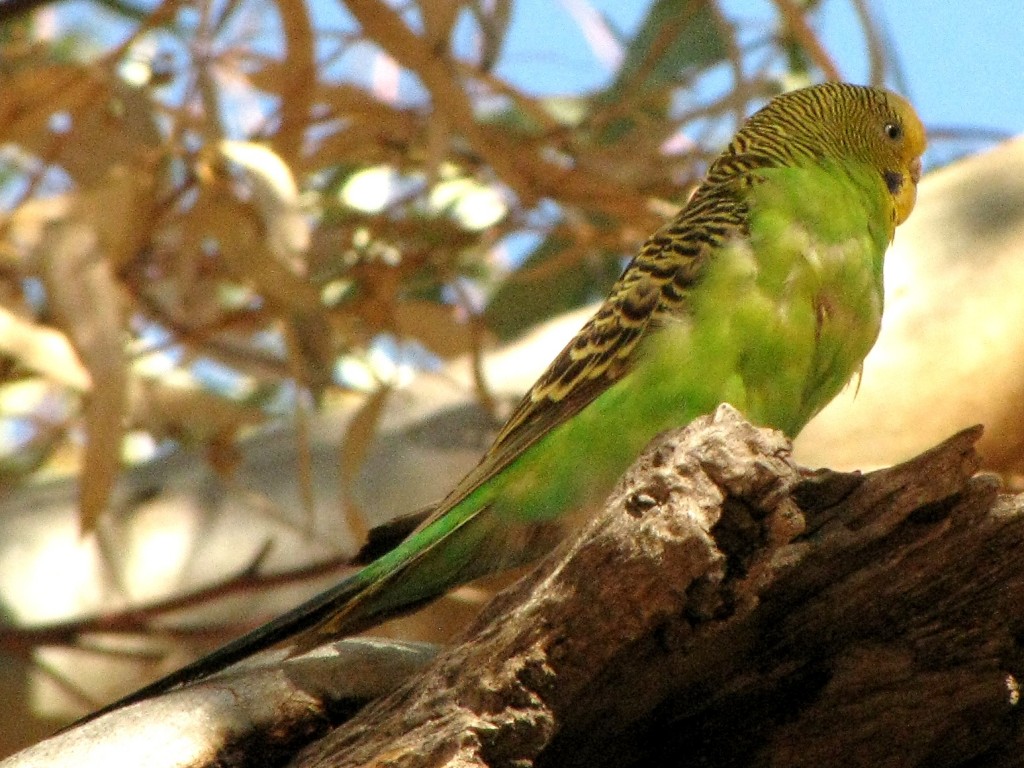
Budgie at Jessie Gap (© Magi Nams)
Today’s fauna: *white-plumed honeyeaters, magpie-larks, crested pigeons, galahs, spotted turtle-doves, diamond doves, white-winged triller, *budgerigars, *rufous songlark, yellow-throated miners, pied butcherbird, zebra finches, *splendid fairy-wrens, *pallid cuckoo, *spiny-cheeked honeyeaters, black-faced cuckoo-shrike, *little crows, spinifex pigeons, *barn owl, brown falcon, whistling kite, black kites, mistletoebird, *singing honeyeaters, willie wagtail, *long-nosed dragons, *striated grasswrens, *western ringnecks, feral camel. (*lifelist sighting)
Reference:
1. Northern Territory Parks and Wildlife Commission. The Three Caterpillars. Interpretive sign at Emily and Jessie Gaps Nature Park.
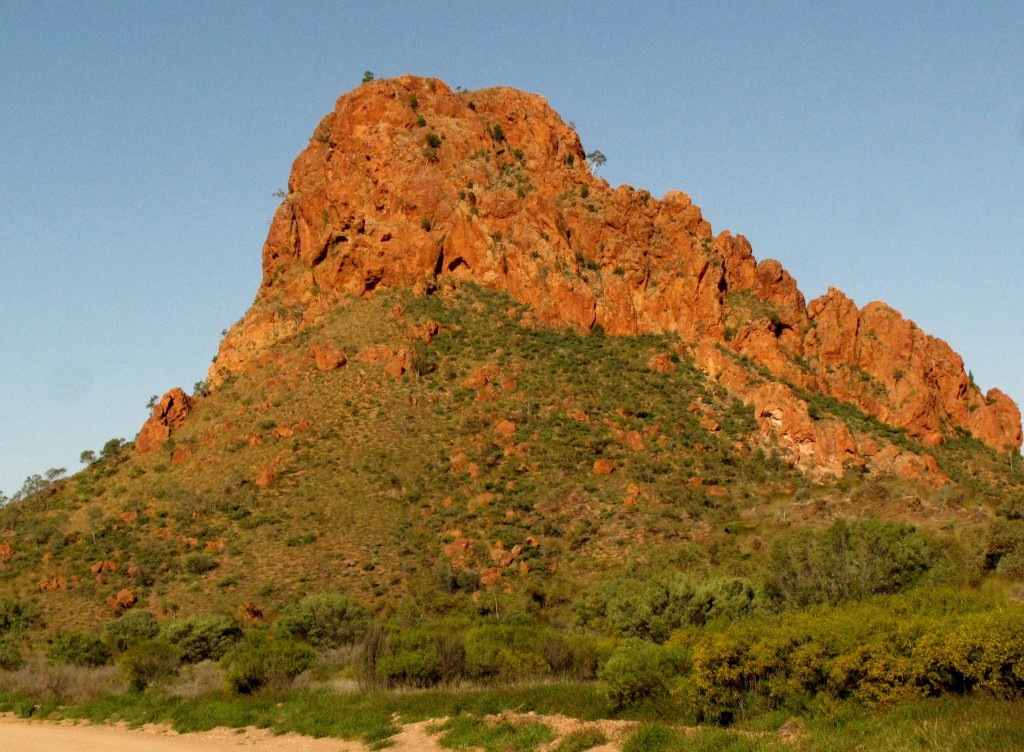
Rock Formation near Trephina Gorge (© Vilis Nams)

